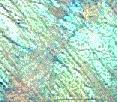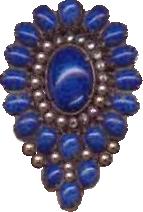
 |
| You might also like: | Rocks and Minerals Vocabulary Word List | Rocks and Minerals Theme Page | Rocks and Minerals Dictionary: A | Today's featured page: Leaf Tracing/Cutting Template |
| Our subscribers' grade-level estimate for this page: 4th - 5th |
 |
Rock and Mineral Dictionary |
 |
| A | B | C | D | E | F | G | H | I | J | K | L | M | N | O | P | Q | R | S | T | U | V | W | X | Y | Z |
lab ruby (or sapphire) A lab ruby (or sapphire) is a synthetic (laboratory-made) stone. It has the same composition, hardness, and specific gravity as natural rubies (or sapphires) but is much less expensive than a natural stone (since they are relatively inexpensive to create in the laboratory as comared to mining gemstones). These lab-produced stones can be legally referred to as "real" stones [as opposed to "natural" (mined) stones]. |
 labradorite Labradorite (a variety of plagioclase feldspar) is a fairly abundant grayish mineral that has brilliant flashes of color (usually green, blue or red) after it is polished (called labradorescence). The crystals are transparent to translucent. There is a darker variety of labradorite (called "black moonstone") which has bluish inclusions. Labradorite is usually cut with a flat surface in order to highlight the flashes of color. Labradorite was originally found along the coast of Labrador about 1805; it is also found in Newfoundland, other parts of Canada, Ukraine, the Ural mountains, and the USA. Labradorite has a hardness of 6 to 6.5 and a specific gravity of 2.70. Finnish labradorite is also known as spectrolite. |
laccolith A laccolith (also called a plutonic formation or an igneous intrusion) is a formation in which magma (molten rock) is trapped beneath the surface of the Earth and pushes the rock located above it into a dome shape. It has a flat base and a convex upper surface. The magma cools and solidifies, and eventually, it is exposed (as the fractured sedimentary rock above it erodes away). Laccolith means "cistern stone" in Greek. |
 lapis lazuli Lapis lazuli is a rich blue opaque, semi-precious stone that has been used in jewelry since ancien times. Ground-up lapis lazuli was once used as a pigment for oil paintings. Lapis lazuli is often dyed to deepen and improve its color. Lapis has a hardness of 5.5; it chips and scratches easily. It has a specific gravity of 2.4 to 2.9. Water can dull its sheen. Lapis lazuli contains the minerals calcite (which decreases its value), pyrite (which can increase its value), and sodalite. Swiss lapis is not Lapis lazuli at all; it is dyed jasper. Denim lapis is relatively pale, low-grade, inexpensive lapis from Chile; it is the color of denim cloth because of calcite inclusions (which whiten the color and lower the value). |
lateral blast A lateral blast is a volcanic eruption that occurs on the side of a volcano; the energy of the blast is directed horizontally. |
larimar Larimar is a form of pectolite (with copper) found only in a single place in the Dominican Republic. It is an opaque sky blue stone with white streaks. There are often some red to brown impurities. Larimar is usually shaped and polished (but not faceted). Larimar has a hardness of 4.5 - 6.0 and a specific gravity of 2.7 to 2.9. Larimar is not enhanced. Larimar was named for Larisa (the daughter of Miguel Mendez, a geologist who helped reintroduce this stone) and mar (the Spanish word for sea). |
latitude Latitude is the angular distance north or south from the equator to a particular location. The equator has a latitude of zero degrees. The north and south poles have a latitude of 90 degrees. The rest of the world is between zero and ninety degrees. |
Laurasia Laurasia was the northern supercontinent formed after Pangaea broke up during the Jurassic period. Laurasia included what are now North America, Europe, Asia, Greenland, and Iceland. |
lava Lava is molten rock. It usually comes out of erupting volcanoes. |
lava tube A lava tube is a tube-like, underground conduit formed by flowing lava. The flowing lava crusts over at the edges and drains out onto lower ground - what is left is a smooth, tube-like tunnel with hanging lava stalactites and a flat floor - a lava tube. |
limestone Limestone is a type of sedimentary rock. Limestone is a white to gray, fine-grained rock made of calcium carbonate. It fizzles when it comes in contact with vinegar or any other acid. Limestone was formed from the remains of ancient seas; it is made mostly of calcite precipitated from living organisms. Coquina is a type of limestone that is mostly made of shells and shell fragment. Dolomite is another type of limestone. |
Linde star sapphire Linde star sapphire ("Linde stars") are synthetic star sapphires that were first made by the Linde Air Products Company in 1947 (they also developed star rubies that year). The Linde company later became a division of Union Carbide. Star sapphires are sapphires that have a six-sided asterism. |
liquid Liquid is a phase of matter in which the molecules are close together and can move around slowly. |
lithified Lithified means turned to stone. |
lithosphere The lithosphere is the solid, rocky, outer part of the Earth consisting of the crust and the upper mantle. |
lithospheric plates Llithospheric plates are a series of slabs that make up the Earth's hard outer shell. There are 16 major lithospheric plates that float on softer layers of the Earth's mantle. |
littoral zone The littoral (intertidal) zone is where the sea meets the land. |
loess Loess is a deposit of tiny, windblown particles. |
London blue topaz London blue topaz (Aluminum silicate fluoride hydroxide) is the darkest blue variety of topaz. Most blue topaz is silver topaz that has been irradiated and heat treated, but some stones are blue naturally. London blue topaz is found in Brazil, U.S.A., Sri Lanka, Myanmar (Burma), Russia, Australia (including Tasmania), Pakistan, Mexico, Japan, and Africa. Topaz has a hardness of 8 and a specific gravity of 3.5-3.6. |
longitude Longitude is the angular distance east or west of the prime meridian (the north-south line that passes through Greenwich, England) to a particular location. Greenwich, England has a latitude of zero degrees. The farther east or west of Greenwich you are, the greater your longitude. Midway Islands (in the Pacific Ocean) have a longitude of 180 degrees (they are on the opposite side of the globe from Greenwich). |
luster A stone's luster is its sparkle or sheen - the way it relects light. The luster depends on the nature of the stone's surface reflectivity. Some types of luster include: adamantine (also called brilliant or diamondlike, like a faceted diamond), earthy (with little reflectivity- also called dull, like shale or clay), greasy (like nepheline or apatite), metallic (also known as splendent, like pyrite or marcasite), resinous (like amber), pearly (with an iridescent reflectivity, like pearls or mica), pitchy (tarry minerals that are radioactive, like uraninite), silky (with a fibrous structure, like some tiger's eye or satin spar), vitreous (also known as glassy, like olivine, transparent quartz, or obsidian), and waxy (like halite or turquoise). A pearl's luster is derived from its nacre. |
 |
Rock and Mineral Dictionary |
 |
| A | B | C | D | E | F | G | H | I | J | K | L | M | N | O | P | Q | R | S | T | U | V | W | X | Y | Z |
Enchanted Learning®
Over 35,000 Web Pages
Sample Pages for Prospective Subscribers, or click below
|
Overview of Site What's New Enchanted Learning Home Monthly Activity Calendar Books to Print Site Index K-3 Crafts K-3 Themes Little Explorers Picture dictionary PreK/K Activities Rebus Rhymes Stories Writing Cloze Activities Essay Topics Newspaper Writing Activities Parts of Speech Fiction The Test of Time
|
Biology Animal Printouts Biology Label Printouts Biomes Birds Butterflies Dinosaurs Food Chain Human Anatomy Mammals Plants Rainforests Sharks Whales Physical Sciences: K-12 Astronomy The Earth Geology Hurricanes Landforms Oceans Tsunami Volcano |
Languages Dutch French German Italian Japanese (Romaji) Portuguese Spanish Swedish Geography/History Explorers Flags Geography Inventors US History Other Topics Art and Artists Calendars College Finder Crafts Graphic Organizers Label Me! Printouts Math Music Word Wheels |
Click to read our Privacy Policy
| Search the Enchanted Learning website for: |